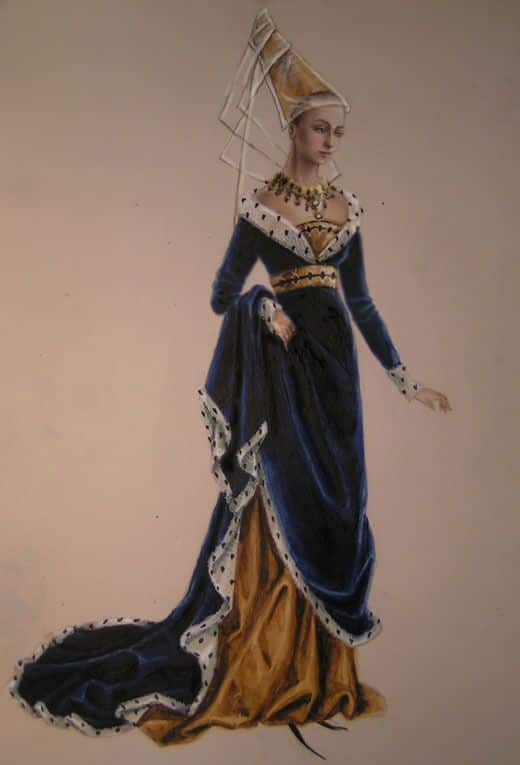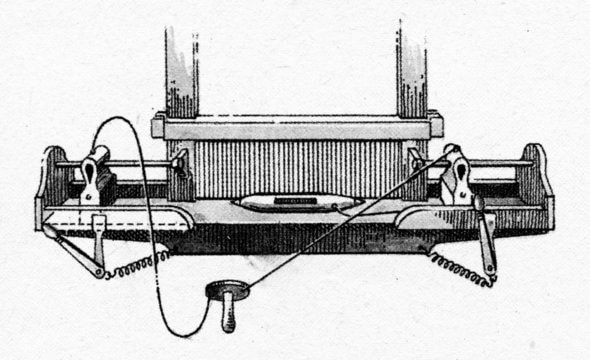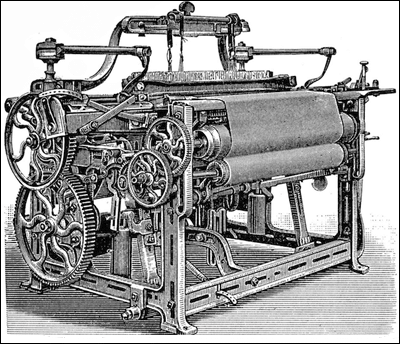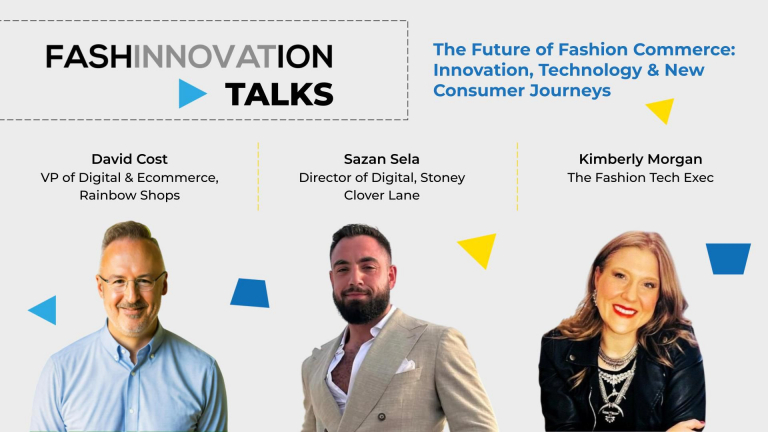Fashion has been driven by change, innovation, and social influence. Fashion can be traced back to prehistoric times if it is defined as wearing a garment.
The main goal was to keep the body warm. However, even if, in the prehistoric age, a garment was animal skin, techniques and innovations were needed to make it easier to wear. Therefore, from the skin to the slim, a road has been traveled. With all kinds of revolutions, history, and debates, we can ask ourselves how we arrived at the fashion and techniques of today while imagining what the future might hold.
Through this article, your understanding of how fashion has been a witness to the perpetual need for the evolution of human beings will increase. Linked to history and technology, fashion since the beginning of times has been changed by the industrial revolutions, and we will see in which one we are currently living.
Fashion trends and wardrobes innovations
In the prehistoric era, humans needed to put something on their skin. The cold was threatening them. Their piece of clothing was animal dead skin. It was the warmer they could create with the knowledge they had. However, they faced an issue with that. Animal skin, after days, started to decompose and smell very bad as well as beginning to be very hard. This last component was annoying especially because it was not practical for haunting. The solution they first found was to chew the skin to make it more flexible. That was the first thin link with the tanning process.
After years, they discovered that water made the skin more flexible but oil was even better. It had also the characteristic of stopping the smell.
Making a jump to ancient Egypt, Roma, and Greece, their wardrobes were full as well. Fashion was important to show which rank you are on and how rich you were. For Roma and Greece, the fabric was very rare and seen as a symbolic thing, therefore they refused to cut it. The explanation for how they were the fabrics is as simple as that. They used unsewn lengths of fabrics and added ornament, pins, and belts. In Greece and Roma, wool was the most used textile since it was easy to color and it came naturally in different colors depending on the sheep.
For Egyptians, wool was not pure. Sheep or anything related was not allowed to get into any temple or pyramid. Hence, it was not used for fabrics, instead, they used linen. They used it as well for mummification and bandage.
One notable comment to make is about nudity, if you were not rich enough to have clothes, Rome and Greece did not permit you to be naked while in Egypt, it was just proving your status quo. Nudity was not a bad thing and some high-ranked women were wearing skirts that stopped just under the breast. as you can see in Figures 11 and 12.


Another huge jump is to be taken to finally arrive at the medieval age. It was time for long dresses, rich patterns embroidered and woven. Those patterns came from the Byzantines. It put a full stop between the lower classes and the upper classes. However, fashion and trends haven’t changed since and the lower classes were reproducing what the upper classes were doing. They made themselves the cheapest version of their clothes.
This fragmentation of fashion within society was even more powerful during the Renaissance. Fabrics were even more expensive, using linen, silk, and hemp. The clothes were more complex following techniques only some knew. Needlelace, passementerie, and ruffs were at the king’s court.

Textile Innovation
The textile used since the creation of fabrics and clothes followed a long and complex journey. Textile reflects the materials and techniques available. Yarn is produced by spinning raw wool fibers, linen, or cotton and is then used to create textiles using weaving, knitting, crocheting, or knotting techniques. The latest evidence of yarn was found in Georgia in 34 000BC and evidence of weaving was found 27 000 years ago.
Before, all clothes were made with a single repeated movement creating a single piece completed by interlacing together the fabrics. Fabrics are used for many different purposes now, from household objects such as wool carpets or sofa fabrics to umbrellas, parasols, parachutes, or firemen’s or police uniforms. The yarns are natural or synthetic, modified by chemistry to make them more or less elastic or resistant.
The persons who changed everything in the textile industry were John Kay, Richard Arkwright, and Samuel Crompton.
1733 – John Kay invented the flying shuttle which increased the speed of the weaving operation ( more rapid spinning of yarn). It happened early in the first industrial revolution.

1769,1779, Arkwright and Crompton created the first mechanical spinner which encourages the development of the mechanized process.
1786- The first power loom was designed and built by Edmund Cartwright, replacing water power with steam power. It allowed a huge increase in the speed of the machine which represented a huge innovation for the time being.

Innovative Power loom
Those 3 elements together completely changed the sewing process and the economies of scale of the fashion industry.
Fashion revolution: Fashion Innovation
To know more details about the industrial revolution and its impact on fashion click here!
Technology is known to enhance production and innovation, moreover, it is known to influence even more human life and economies at a certain point. The first industrial revolution was the creation of mechanization. Machines helped humans to do tasks more easily by proving solutions to very long processes. The second one was the implementation of electricity, delivering the possibility of producing more rapidly. The outflow was mass production and the huge development of economies around the world.
The last one, the third one was the incredible creation of IT systems and automation, leading to even more rapid production. It also helped the industry to shift its human focus to tasks needing more thinking. Leaving the production part only to machines. It has of course increased exponentially the mass production. Nowadays, the revolution is the fourth one. It represents another level of automation, it is the direct application of robotics, virtual reality, augmented reality, and naturally, artificial intelligence to develop innovation even more.
Revolutions transformed how economies develop. Linked to the fashion industry, the first three revolutions enhanced the lack of efficiency by implementing mass production to increase output while the third and fourth ones are more about technologies lowering the cost of producing to maximize profit.
Although, it has been a huge change and evolution for the industry in general and for the fashion industry, many externalities and bad outcomes have flown from it. 10% of our carbon emission is the result of the fashion industries according to UNEP research back to 2018. The fourth industrial revolution is therefore focusing on those negative impacts to make innovation more viable and sustainable.
Does innovation mean solutions?
The main issue of the fashion industry after all these industrial revolutions has resulted an unmatched demand and an oversupply. The previous era was based on increasing supply and decreasing prices which ended up with the creation of fast fashion and the concept of disability. A major consequence has become the biggest challenge of our century: environmental sustainability.
Overproduction is what impact the most the environment, the average error in the forecast of future production is between 40% and 100% which is a large proportion of the entire stock of any brand.
Those miscalculations are the reason why environmental sustainability is the first and main goal of the 4th revolution. The 2 other goals flow from the first one. Diminishing the oversupply is linked to providing more personalized products and services and is the second goal. The third one is the reshaping of productivity. The meaning behind this is that productivity should follow the personalized of products and services and not mass production to avoid oversupply.
How those goals can be answered? Technologies…… and innovation!
Tech-innovation
Artificial Intelligence
Artificial intelligence and computing power allowed factories to become “smart”.
Smart means that the production is now able to adapt quickly to changing demand by self-optimizing. The data gathered by AI is then used to prevent or fix changing demand without the need for human intervention. The factories are more efficient and agile and bring a better competitive advantage to the market. Real innovations are created.
AI’s capacities are immense. Its abilities for pattern recognition as well as perception and data learning. AI can mimic the cognitive function of humans which had many applications in today’s world.
Styling services have been abled by AI. Analyzing research consumers did or pictures they uploaded made it easier for AI assistance to create patterns and process trends. The main component of AI is the solution to oversupply: personalization. AI has the knowledge and the power to understand what one could want and therefore limit oversupply.
Fleetz is a startup with quite an original way of selling products. They produce shoes made for you and you only. They developed an app with AI assistance that asks you to take a minimum of 3 pictures of your feet. The AI will measure feet size and particularities of your feet. After that, you receive at home your 3-D printed shoes at. This process can be done within a week.
Prevolve is another startup that does the same but for scandals. The only difference is that you need to go to the offices so they can scan your feet. Based in Canada, this startup then sends you your feet information and you can order on the website whichever pair of scandals you want. You can create your shoe from scratch and personalize it. Check their website here !
AI’s application reduced waste by increasing the process of personalization as well as lead time and production cost.
Robotics
As said in the section before AI and robotics are closely linked with the process of 3-D printing.
Even if it’s not 3-D printing, robotics made sewing evolve. Automation of sewing robots helped the detection of distortion to adapt with more precision. The margin of error is decreased therefore implying mistakes and waste.
The example the sewing robot at Tianyuan Garments which produces a piece for Adidas and Reebok is known to cut fabrics and sew a tee shirt in 4 minutes. Multiplication of robots in factories could lower the cost of production especially by cutting manual labor. Uniqlo as well as using this process in its factory, almost 90% is only robotics and AI.
Manufacturing became intelligent, not only in the sense of production but also with complex optimization. Adidas created a “speed factory” where the creation of sneakers is digitalized and automated. Knitting and sewing can be digitalized by a computer and then send to a robot to apply it with a 3D printing machine. It allows more customization, therefore, reducing the production of the product that won’t be sold. It leads the time frame to reduce from months to days. Unfortunately, the project had to close due to the complexity of achieving economies of scale.
AR and VR
Augmented reality and virtual reality have enhanced customers’ online shopping experience as well as in-store. Take your car and go to the store, looking everywhere for something you’ll like, trying, again, and again…. It gets tiring and annoying very quickly! AR and VR have completely changed this experience. Firstly, by not even taking your car, you can go on the website of the brand you like and try clothes.
YES. Try clothes, online!
Usually, the brand outsources to a third party the implementation of AR/VR on their website. With brands such as Metail, you can take pictures of yourself and the app will create an avatar of you. Hence, you can thereafter upload it on your webpage and try the cloth directly. Gap also did that with a mobile dressing room. It is not time-consuming and has no carbon emissions due to your car.
However, if you want to keep this experience of shopping by coming to the store you still won’t need to make the effort of trying. Technologies helped create interactive spaces where you can try the clothing only by looking at yourself in the mirror and by sliding your fingers.
Ending the innovative journey…
From the prehistoric era to AR/VR fitting room, technology and innovative ideas have implemented how shopping is done as well as how we dress. Hopefully, this 4th revolution will target the issues of today’s world and be able to solve them.
A long silk road has already been travelled but we are not at the end of the surprise!






